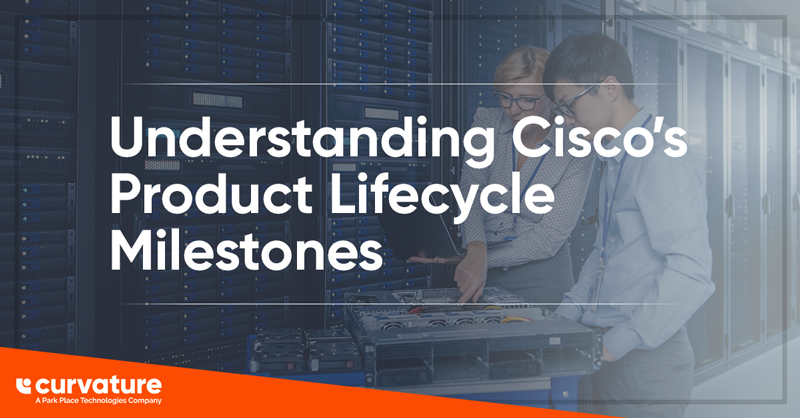Minimize the Risk of Downtime and Maximize Cost Savings
There are five important milestones in Cisco’s product lifecycle. They are End of Life (EoL); End of Sale (EoS); End of New Service Attachment (EoNSA); End of Service Contract Renewal (EoSCR); and Last Date of Support (LDoS). Knowing which stage your Cisco equipment is in and how to plan for it can be critical to minimizing the risk of downtime and maximizing your cost savings. But there’s no need to panic—Cisco announces EoL dates 1 year before EoS dates, and gives you another 5 years before LDoS.
Still, even with advance notice, planning is the most critical factor when managing your products’ lifecycle.
Step 1:
Review and understand each milestone and what it means to your product:
- EoL Announcement Date: This is the date Cisco announces the EoS and EoL dates of a product to the general public.
- EoS Date: This date refers to the last time you can order the product through Cisco.
- EoNSA Date: For equipment and software that is not covered by a service-and-support contract, this is the last date to order a new service-and-support contract or add the equipment and/or software to an existing service-and-support contract.
- EoSCR: This is the last date to extend or renew a service contract for the product.
- LDoS: After this date, all support services for the product are unavailable.
Step 2:
Use the EoL announcement date to start the planning process. The first date to be mindful of in the product’s EoL announcement is the EoS date. After this date, you will no longer be able to purchase this hardware directly from Cisco. At this time, you will need to decide whether you want to upgrade or purchase from a third party. You’ll also want to consider whether buying Cisco’s suggested upgrade path will be compatible with the existing products in your network. For example, upgrading to Cisco’s new C9800 Series Wireless Controller will require mandatory AIRE-DNA subscription licenses. Customers who are used to the perpetual licensing model will be forced into the new subscription model.
Step 3:
Understand when is the last date you can purchase or renew support on your devices. The next two dates to be aware of are the “End-of-New-Service contract attachment” and “End-of-Service Contract Renewal”. After the EoNS/EoSCR dates, you will no longer be able to purchase a new support contract for Cisco’s product. If your hardware is on support, you will generally have one year from this date to renew.
Identify the devices in your network infrastructure and if it’s crucial to have a Cisco Service Contract on those devices. Understand which devices in your network require a service contract for software updates and which devices are only benefiting from hardware replacement.
Some Cisco Products, such as the Cisco FirePower 1000 series, need regular signature updates that contain the latest known attack patterns. Attaching your product to a Cisco SMARTnet contract is the only way to get those updates.
On the other hand, routers and switches that are EoL with IP services, non-software intensive products (e.g., optics, memory, line cards, chassis, and power supplies), and older products with no software updates from the OEM are generally a good fit for third-party maintenance. For example, the Catalyst 3850, 3650, as well as the ISR 4K routers are all for the most part stable, so OEM support is not typically necessary.
Step 4:
Once you have taken inventory of the products in your network that you are at risk of losing support on, take a moment to review your options:
- Will you renew or add support to your existing Cisco hardware?
- Will you put the devices on third-party maintenance?
- Will you upgrade to the next recommended product?
In the end, take the time to plan what equipment you should consider upgrading and whether to go with OEM support or choose a third-party support provider. If you’re just now tooling up, you can opt to buy used networking equipment with TPM for support, or you can buy new Cisco products. A little planning can save you a lot of money, minimize downtime, and, most importantly, panic attacks.
For more details on the Cisco product life cycle, contact us today!



